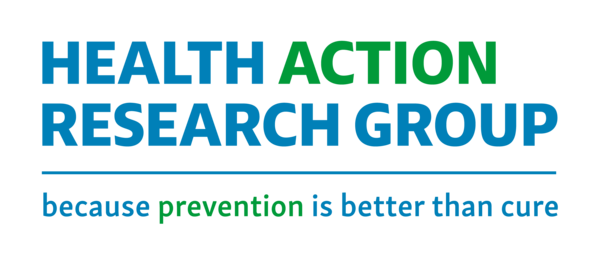Social media is increasingly acknowledged as having significant potential impacts on the mental health of young people, though there are mixed opinions and findings on the extent to which these outcomes are positive or negative, as outlined in a recent review paper on the topic (1). This small study adds a further perspective.
What we researched
As part of our broader research into portrayals of mental health conditions on social media this study looked at how depression and anxiety – two of the most commonly diagnosed conditions in young people - were portrayed on TikTok and Instagram, two social media sites particularly popular amongst this age group. Content posted between November 2022 and January 2023 with hashtags including #depression, #anxiety, #depressionis, #anxietyis, #depressed, and #anxious was examined, looking at features of the posts including language, imagery, music, hashtags and captions to assess portrayals of depression and anxiety. A large volume of posts containing these hashtags was found, demonstrating the prevalence of mental health related content available on these platforms. A smaller sub-set of 19 posts which were deemed by the researcher to be most impactful and relevant to the conditions were analysed (for example, posts which included the hashtag depression but appeared more related to transient or situation-related low mood were excluded). Due to restrictions on what can be accessed on social media platforms, it is acknowledged that the sample may not have been entirely representative, although the aim was to get as balanced an overview as possible
A move away from stigmatising
Within the debate around the impacts of social media on mental health, it has been suggested that openly discussing mental health on these platforms can have a positive impact in terms of helping de-stigmatise and normalise mental health-related challenges and conditions, for example by educating people about facts and in doing so replacing stereotypical views of conditions, and by promoting contact between people with different mental health conditions and others without these conditions to help break down barriers and stigma (2). During our exploration, we did indeed find several examples of posts which appeared evidence-informed and served to portray a balanced view of depression or anxiety, for example by explicitly addressing and challenging common and inaccurate assumptions about the conditions (e.g., ‘Depression is just feeling sad’). This was particularly noticeable on Instagram, where several accounts run by qualified professionals (e.g., therapists) were found.
Unintended consequences? A romanticising approach
However, in recent years, a potential downside to the normalising of mental health conditions on social media has been raised, with suggestions that it may in some cases pave the way to a so-called ‘romanticising’ of serious conditions. This can be viewed as an opposite to stigmatising, instead portraying a condition as ‘cool’, ‘quirky’ or desirable in some way, and ignoring the negative and serious aspects of living with a mental health condition, which are real and should not be underestimated. Though there are relatively few scientific studies looking into this aspect of social media compared with other potential harms, there have been some suggestions that social media portrayals of mental health conditions may contribute to an increase in ‘desirability’ of these conditions amongst young people, as acknowledged in a recent review paper in the Canadian Medical Association Journal (3).
Evidence of romanticising of depression and anxiety taking place on both Tiktok and Instagram was apparent in our investigation. Several different examples of this were found, and typically included the following features most commonly:
- Downplaying the seriousness of a condition through humour
- Portraying the condition as cool, quirky, trendy
- Portrayal of anxiety as cute, making the sufferer more ‘loveable’
- A poetic portrayal of depression, portraying sufferer as a ‘lost’ and ‘misunderstood’ soul through use of poetic or flamboyant language
On Instagram this included the use of ‘cute but psycho’ as a hashtag; linking with fashion movements/trends (goth, metal, ‘moonchild’ hashtags); the use of attractive, rainbow colours; quotes such as ‘These days giving up looks more like paradise’ and/or editing to suggest a dark/cool/mysterious element.
On TikTok this included linking anxiety with a loving relationship (associated with getting more attention/affection from a romantic partner), attractive cartoon images, and cute animals.
Overall, of the nineteen Instagram and Tiktok posts reviewed, 84% appeared to present a romanticised portrayal of anxiety or depression, none appeared to provide a stigmatising portrayal, and 16% appeared to provide a realistic portrayal.
Three visual examples of posts which appeared to emphasised this romanticising approach are presented below:
This example was found on the platform TikTok and included the following hashtags: #lovestory #relationships #anxiety, whilst soft and gentle music was playing with the clip.
The second example is from Instagram and was found using the hashtag #depression. This post also used a weeping rose emoji in its caption (removed to preserve the anonymity of the user) which also appeared to add an element of romantic nuance.
This final example is also from Instagram, again including #depression. It’s use of a well-known Disney character and jovial presentation potentially take away from the seriousness of the topic (implied suicidal thoughts/feelings).
Conclusions:
The potential positive effects of sharing mental health-related content on social media, such as educating about, and de-stigmatising conditions is important and should not be negated. However, we found evidence suggesting mental health conditions such as anxiety and depression may not always be portrayed in the most accurate way on popular platforms, with negative aspects often being downplayed in favour of romanticising these conditions. It is recommended that it is acknowledged by policy makers and social media platforms that this more subtle phenomenon is taking place in addition to more explicit harmful content. More research is also needed into this potentially harmful trend
Lucy Doyle, March 2023
Cited in this post:
